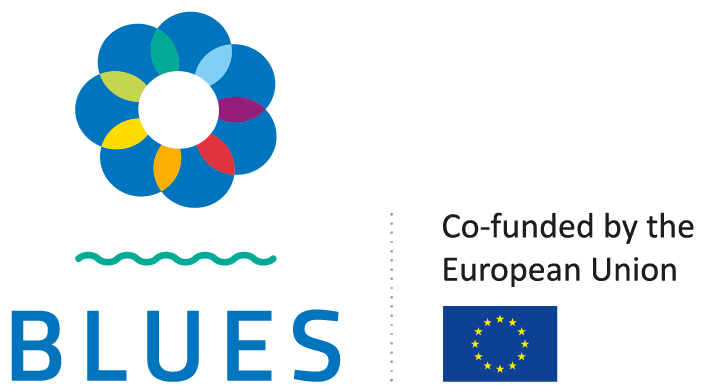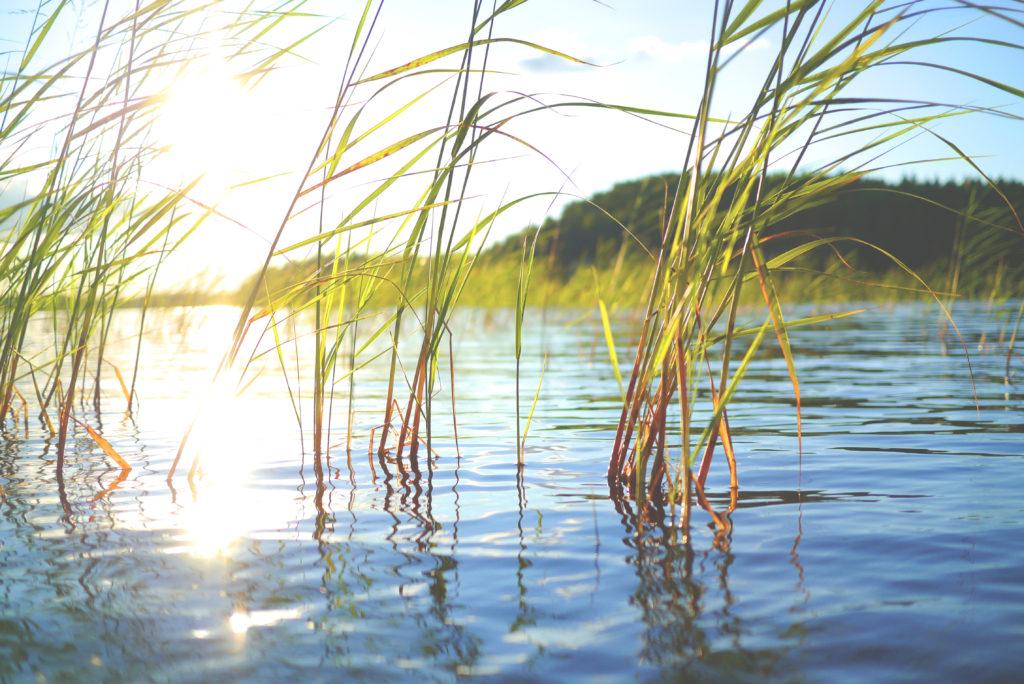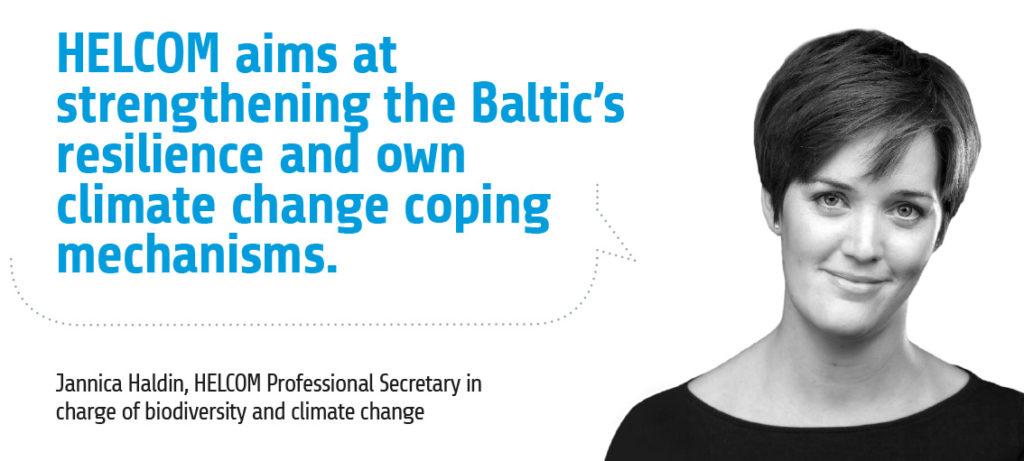What is biodiversity?
Biodiversity refers to the variety and variability of all life on Earth, and, contrary to common perception, it is a measure of variation at both the genetic, species, community and ecosystem level. Thus, it doesn’t only deal with species. It refers to anything alive on the planet. And it can be scaled up or down as needed, for instance, “biodiversity of the Baltic Sea”, or “biodiversity of the Gulf of Gdansk”.
To simplify, you can think of biodiversity as building blocks. Each individual gene, each individual species, each community of species is a building block. The more different building blocks you have, the more different things you can build. And the bigger you build, the more difficult it will be to get knocked down. This also applies to the Baltic Sea, where the building blocks of biodiversity create and maintain the ecosystem.
What is the current state of biodiversity in the Baltic Sea?
The Baltic Sea is unique, there is no other sea like it in the world. This is true for its biodiversity as well. Thousands of species and millions of genes create its distinctive underwater biodiversity. This might sound like a lot, but in reality, these are only a few building blocks compared to most other areas around the world. Due to its relatively low biodiversity, the Baltic Sea is very vulnerable.
We believe that the Baltic Sea contains around 5000 species, out of which over 2700 are macro species – species you can see with the naked eye. The majority of these species, a total of 1898, belong to the benthic invertebrate group. These are species of animals living around, on or in the bottom of the sea, such as mussels, worms and crustaceans. Of the remaining 832 species, the “plants” of the sea (multicellular algae, vascular plants and bryophytes), make up a substantial proportion, followed by the fish and lamprey group.
Species diversity is rather low in the Baltic Sea compared to many other marine environments, as the low-salinity, brackish water environment is physiologically demanding to most organisms.
A clear trend in biodiversity is evident for all groups, with the number of species in an area decreasing along a south to north gradient. This trend is natural and a result of the Baltics unique salinity gradient and high variability in habitat type. These two aspects area also what gives the Baltic Sea a greater biodiversity and variety of plant and animal life than might be expected under more classic conditions.
The brackish water imposes physiological stress on both marine and freshwater organisms, but there are also several examples of genetic adaptation and diversification. Most of the marine species that are present in the Baltic Sea originate from a time when the sea was saltier, and since then only had limited genetic exchange with their counterparts in fully marine waters. On a Baltic-wide scale, marine species live side by side with freshwater species.
However, the species that have adapted to the Baltic Sea conditions often appear in great abundance. In other words, we have relatively few different species, but the Baltic Sea is quite crowded.
As many of the species in the Baltic Sea live on the edge of their tolerance to habitat variations, any change to their living environment can lead to radical fluctuations of their abundance. The structure of biodiversity in the Baltic Sea can change significantly with even the smallest modification in environmental conditions.
Although marine species are generally more common in the southern parts, and freshwater species dominate in the inner and less saline areas, the two groups of species create a unique food web where marine and freshwater species coexist and interact. Because the sea in its current form is quite young, the Baltic Sea still offers several ecological niches available for immigration.
This second HELCOM holistic assessment shows that most fish, birds and marine mammals, as well as benthic and pelagic habitats of the Baltic Sea are not in a healthy state. A deteriorated status is seen in different parts of the system, comprising species which live in the open water column, in coastal areas, as well as those close to the sea floor. The impact is likely to influence the ecosystem’s functioning, the resilience of the system against further environmental changes, and the services the ecosystem provides.
What are the greatest threats and pressures on Baltic Sea biodiversity?
We put pressure on the biodiversity of the Baltic Sea through our actions. Using the building block analogy: everything we do – the pressures we exert – pushes the building blocks further out of place. Depending on the pressure, the blocks get pushed a little or a lot, and it can be only a few blocks or all of them at once. Push too hard and the structure starts to topple.
Natural systems are complex, and each building block is connected to hundreds of others. We therefore can’t always be sure what impacts we are causing through our activities. But we do know that the more things we do at the same time, the more pressure we put on the system, pushing simultaneously from different sides. And we also know that, like a tower of building blocks, once the first blocks start falling, they can take other blocks with them in their fall. When we start losing genes or species, there is a risk of a domino effect for other species and biodiversity elements.
In order to ensure that the entire system doesn’t collapse, that we don’t lose biodiversity, and that we keep the ecosystem functioning, we need to limit the amount and intensity of the pressure that we cause through our actions. This is done through better managing human activities.
For improving the management of our activities, we need to know which are the ones causing the most pressure, and which can be considered the greatest threat. These need to be targeted first. This is more complex than it seems: Getting the answer right is vital to ensure that we cause the least damage through our activities, and that our conservation efforts yield maximum results.
Due to the comparatively large amount of data that we have on pressures in the Baltic Sea, such as through the Baltic Sea Pressure Index, we have a fairly good idea of what the main pressures in the Baltic Sea are, where they occur, if they are widespread or local, etc.
Theoretically, the more widespread and the stronger a pressure is, the worse it is from a biodiversity perspective. Major pressures on the Baltic Sea – eutrophication, hazardous substances, introduction of non-indigenous species, and effects of commercial fishing – are all at higher than sustainable levels.
To understand which human pressures have the greatest impact on biodiversity, we need to know where the pressures and the biodiversity intersect, and how they interact. Unfortunately, we have far less information about these interactions than on the pressures themselves.
While we are used to looking at the pressures individually, when it comes to the actual effect they have on the living environment – us humans included – we need to understand how pressures act and affect a biodiversity component together. This is what we refer to as cumulative impacts. HELCOM has been working on a cumulative impacts index to get a better idea of this. Each gene, species or community in the Baltic Sea is affected by several pressures at once. Sometimes, the effects of the combined pressures add up to more than the sum of the parts.
When talking about threats, this might be viewed differently. There can be very strong, and even widespread pressures, that in reality are less of a threat because they are direct. This means that we know their source, and that we know what to do to fix them. So, although the need for action is acute, the long-term threat to biodiversity can be considered less significant – provided we do something about it now.
On the other end of the spectrum, we have diffuse – or indirect – pressures. These are pressures for which the source is either not known, difficult to manage, or we might not yet know how to manage them. A good example for this is climate change: In the long term, it might be a much bigger threat because we don’t know how to fix it.
What about the HELCOM indicators on biodiversity? What is their use?
HELCOM uses core indicators as a way of measuring how the sea is doing. It’s like a fever thermometer. Scientist have come together to agree on a threshold, above which we think that biodiversity is doing ok, and below which it shows that something is wrong. We can use these to “take the temperature” of a given biodiversity component and get an idea of what the current state is as well as see if the sea is getting healthier or not, or if we are getting closer to the threshold.
HELCOM biodiversity core indicators currently look at the status of the Baltic Sea as reflected by marine mammals, seabirds, fish, benthic biotopes and pelagic plankton communities.
What are the trends in regards to biodiversity in the Baltic Sea?
So what trends are we seeing for biodiversity? Unfortunately, it is not so positive. For the biodiversity core indicators there are cases of inadequate status in all levels of the food web; only a few core indicators have acceptable levels in part of the Baltic Sea, and none of them in all assessed areas. The overall results suggest that the environmental impact on species in the Baltic Sea are far-reaching and not restricted to certain geographic areas or certain parts of the food web.
However, we should also recall what the state the Baltic Sea environment could have looked like without the work that has been done so far. We know that pressures such as inputs of nutrients and several hazardous substances are decreasing, and that several former pollution hot spots have been removed.
Many pressures have been acting on the Baltic Sea for a long time. Legacies such as nutrients and contaminants will still show unacceptable levels in the marine environment long after their inputs have ceased. Ecosystem models show that responses to nutrient reductions act on the time scale of decades.
So, recovery might take time. But if we limit the amount of pressure we put on the environment it is anticipated that biodiversity will show signs of improvement in the coming years. For this, continued efforts to improve the environmental status of biodiversity are of key importance.
Baltic Sea and ecosystem services as a life-support system in the region: how important is it?
Let’s get back to the idea of biodiversity as building blocks. Now imagine that every structure you build with your blocks has a function: one cleans the air, one cleans the water, one makes food, etc. This is of course simplified but it is illustrative.
If you only have a few blocks, you can only build one copy of each of the structures, so if one of them is knocked down, for instance the air one, you won’t be able to breathe anymore.
But the more copies you have, the less likely it is that if something gets knocked down, you will lose that function. This is why high biodiversity is considered important. Each unit and each level of biodiversity fulfils a multitude of functions we need to survive, and the more complex the system, the more difficult it is to topple it.
These functions are called ecosystem services and are a natural effect of all the interactions going on in an ecosystem and its biodiversity. Ecosystem services are defined as “the benefits people derive from ecosystems”. Besides provisioning services or goods like food and raw materials, plants, animals, fungi and micro-organisms provide essential regulating services such as pollination of crops, prevention of soil erosion and water purification, and a vast array of cultural services, like recreation and a sense of place.
In spite of the ecological, cultural and economic importance of these services, ecosystems (and the biodiversity that underpins them) are still being degraded and lost as we put more pressures on the ecosystem then it can take. One major reason for this is that the importance of ecosystems to human welfare is still underestimated and not fully recognized or incorporated into every day planning and decision-making.
To what extend does the Baltic Sea’s biodiversity have effects on us humans?
We humans are part of this world. There is no humans versus the rest of nature, and this is also true for biodiversity. People depend on biodiversity in their daily lives, in ways that are not always obvious or appreciated. If we go back to the idea of toppling the blocks: when a structure crumbles, it affects us as much as all the other parts of the ecosystem.
The World Health Organisation (WHO) acknowledges that human health ultimately depends on ecosystem products and services, and that these are necessary for good human health and productive livelihoods. Biodiversity loss can have significant direct human health impacts if ecosystem services are no longer adequate to meet social needs. Indirectly, changes in ecosystem services also affect livelihoods, income, local migration, and, in some occasions, may even cause political conflict.
What is HELCOM currently doing on biodiversity?
HELCOM is the governing body of the Convention on the Protection of the Marine Environment of the Baltic Sea Area. This means that HELCOM works to improve the state of the sea as a whole, which intrinsically means improving the situation for biodiversity. The Helsinki Commission provides a platform for the states around the Baltic Sea and the EU to agree on policies, plans and develop guidelines, recommendations, etc. that the countries can use to manage human activities.
HELCOM’s vision for the future is a healthy Baltic Sea environment with diverse biological components functioning in balance, resulting in a good ecological status and supporting a wide range of sustainable economic and social activities.
The HELCOM Contracting Parties have declared their firm determination to assure the ecological restoration of the Baltic Sea, ensuring the possibility of self-regeneration of the marine environment and preservation of its ecological balance. They have agreed that each country individually, as well as where needed jointly, take all appropriate measures to conserve natural habitats and biological diversity and to protect the ecological processes of the Baltic Sea.
This will all be incorporated or maintained in the update of the Baltic Sea Action Plan, which will guide HELCOMs work in the coming years.
HELCOM has a number of Recommendations that deal with biodiversity and conservation, the newest of which was approved as recently as March this year.
HELCOM also works to improve and extend the system of marine protected areas in the Baltic, creating spaces were pressures are limited and biodiversity can be maintained, in the efforts to achieve HELCOMs ultimate aim: to Protect the Marine Environment of the Baltic Sea.





